Welcome to the Ports Clean Air Quarterly, the newsletter for port-related clean air and climate activities. Each newsletter showcases projects and milestones across our gateway, features a partner who is making a difference in our region, and highlights upcoming opportunities for community engagement, such as bus tours, commission meetings, or webinars!
This edition will be a 2022 in Review, highlighting sustainability successes from last year. The Port of Tacoma, Port of Seattle, and The Northwest Seaport Alliance (NWSA) have made major strides towards our climate goals and we will look back on the work that made these achievements possible as well as look forward to the work ahead to meet our clean air goals. We look forward to working with all of you to achieve them. Onward and upward in 2023!
2022 was a busy year for the Ports’ maritime environmental initiatives. One of these achievements was the development of NWSA’s first clean air-focused newsletter, which provides a behind-the-scenes look at the work that goes into the complex task of “reaching zero emissions” and “improving air quality” at the ports.
Many of these projects have been explored in more detail in past issues of this newsletter, and if you want to learn more, visit our issue archive here.
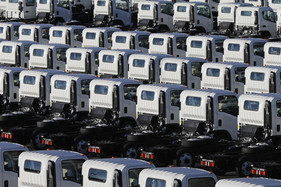
TRUCKS
The trucking industry is a critical partner in the port ecosystem and with around 5,000 trucks serving our harbors, we are dedicated to supporting truckers as we aim to transition our gateway’s trucking fleet to zero emission technology. In 2022, we worked on several initiatives to get closer to this goal. Last year, the NWSA and Port of Seattle coordinated with SDOT to establish over 100 spots of overnight truck parking along public right-of-way on Harbor Island. These efforts reduce the number of trucks parking and moving through near-port neighborhoods and improve air quality for our families and neighbors in our shared airshed.
Last year, the NWSA offered clean truck incentives for truckers to switch to newer model year trucks with lower emissions. This program will continue into 2023 with up to $30,000 available for each trucker to purchase a newer vehicle.
|
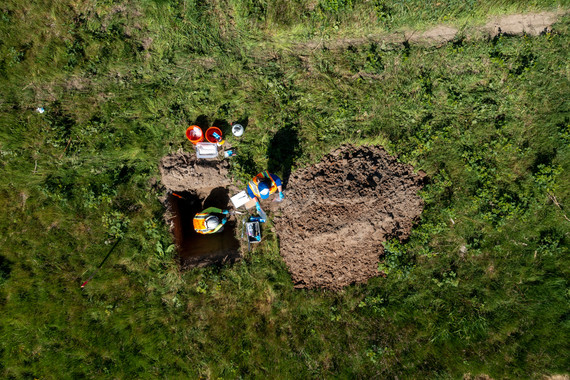 HABITAT
The health of the ecosystems that support port operations is key to building resiliency for both Ports and the community. In Tacoma Harbor, the Port of Tacoma’s Habitat and Remediation team entered the planting phase for the Lower Wapato Creek. Created in partnership with the Puyallup Tribe of Indians, this site re-establishes stream and wetland habitat for fish, birds and wildlife on 20 acres of land in the Tacoma Tideflats.
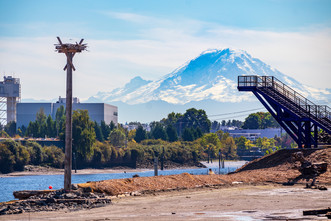
For the Port of Seattle, years of dedicated work, innovation, and reuse have resulted in the Duwamish Peoples Park: 14 acres of shoreline habitat and public access on the banks of the Duwamish River. Restoring a former terminal, this development is healing environmental and cultural wounds caused by the industrialization of the Duwamish Valley while improving community wellbeing, strengthening relationships, and restoring habitat for salmon. We are proud to celebrate this accomplishment and invite you to ‘Save the Date’ and join us in honoring the opening of the park on July 16, 2023.
|
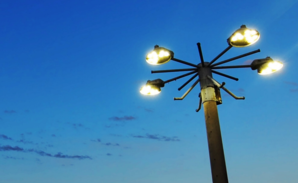
Upgrading industrial and infrastructure assets to lower carbon alternatives is one way to reduce our own port generated emissions. 2022 saw numerous energy efficiency projects take shape in both harbors. At Port of Seattle and Port of Tacoma, extensive lighting audits began to map out opportunities to improve the energy usage of all terminals and Port-operated buildings. Port of Seattle has already completed 4 LED lighting upgrades that will save 1,180,599 kWh of energy each year. This process continues for the Port of Tacoma with installation beginning in 2023.
|
Shorepower projects also saw major progress in 2022. At Terminal 91, shorepower for cruise ships has been fully installed. Shorepower utilization at this terminal alone has reduced CO2 emissions by 2,000 tonnes. NWSA is striving to install shorepower at all terminals by 2040. In 2022, we moved closer to that goal: Terminal 5 Phase 1 shorepower construction was completed, with usage beginning in 2023 and construction of phase 2 in progress. In the South Harbor, construction has begun at Husky Terminal on shorepower and is schedule to be operational in 2024.
2022 marked the beginning of the intensive process of collaboration between Port of Seattle, NWSA, and partners at Puget Sound Maritime Air Forum to inventory the Ports’ greenhouse gas emissions at a large scale. This work will provide the 2021 update to the Puget Sound Maritime Air Emissions Inventory which will be accessible through the new Emissions Data Tool developed by the Port of Seattle.
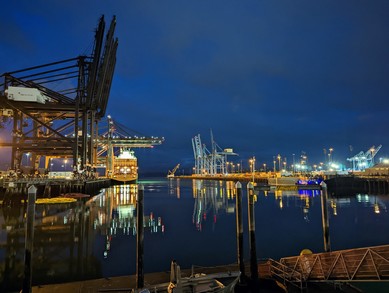
To eliminate all carbon emissions from seaport-related activities by 2050, international partnerships are critical to addressing climate change at a global scale. To this end, we were excited to announce multiple green corridor studies in 2022. Working with the United States’ State Department, the NWSA will partner with National Labs to conduct a feasibility study investigating the creation of a green shipping corridor between the NWSA and Busan, South Korea. This study pursuing a green corridor across the Pacific Ocean which would assist in eliminating emissions associated with cargo that is transported from Asia to the US West coast each year. Additionally, the Port of Seattle entered into agreement with British Columbia and Alaska establishing a cruise green corridor.
|
In addition to the projects and programs that will continue or enter new phases in 2023, there are new initiatives we will be launching in the coming year. We are excited to roll out new engagement opportunities and strategies, updates on the Northwest Ports Clean Air Strategy progress, events that address climate action and resiliency, and interviews with community and industry partners.
One of these tools will be our joint web portal, which will provide information about environmental activities in support of reaching our Northwest Ports Clean Air Strategy goals across the Port of Tacoma, Port of Seattle, and NWSA . In addition to a progress tracker that shows how we are doing in meeting our sustainability goals, it will also have resources and information on emission sources and project details. This tool is being designed to provide fundamental transparency and accountability between the Ports and our stakeholders by offering accessible views on shared program metrics and milestones. By sharing updates on our clean air goals, community members and industry partners will be able to easily engage with all the ways the Ports are advancing zero emission goals.
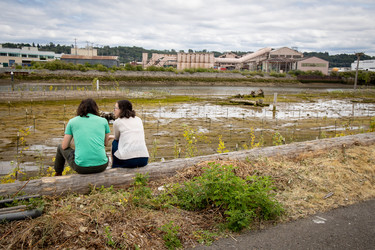
This quarter we are featuring a strong partnership between the Ports and a community-based organization called Duwamish Valley Sustainability Association. (DVSA) We sat down with the Executive Director, Edwin Hernandez, to highlight DVSA’s work supporting youth to drive clean air projects.
Q: Tell us about yourself: How did you get started in this work, and what does your organization do?
A: My background is in mechanical engineering, which I studied in Peru. I worked with private companies in Peru to develop and implement clean energy projects. When I came to the US, I saw the potential to partner with local communities for sustainability and energy projects in the Seattle area. At the time, my thinking was that community outreach was the only way to engage with community—so we set out to build outreach training for youth. But the youth said they wanted actionable, practical skills that leads to careers, so we changed our organizational model.
Our organization provides opportunities for youth to be trained in STEAM (Science, Technology, Engineering, Art, and Math) skills and gain experience in project development, management, and implementation from idea to finalization. Our goal is to provide training for youth that breaks historical barriers to green careers while growing healthier, more sustainable communities.
Q: How does climate change and clean air issues fit into the work DVSA does?
A: These environmental issues drive all of our work at DVSA—youth, especially, are engaged in conversations about climate change adaptation, clean energy pathways, and quality of life in the Duwamish Valley. The Duwamish Valley is a community that has suffered, for decades, from social and environmental injustices. By making these programs youth led, youth get the training and skills to become future professionals and/or technicians who are in charge of continuing this wonderful work. The Port of Seattle has been a trusted partner since the conception of DVSA, and aligning these projects with the Zero Waste and Clean Air programs at the Port forges a pathway for Youth to experience real environmental careers and participate in all processes involved in the scoping, development, funding, and implementation of transitioning to renewable resource usage.
Q: Tell us about the coordination with Port of Seattle on the solar panel project at Duwamish People’s Park?
A: Youth lead the big ideas. For example, the solar panel project at Duwamish Peoples’ Park was initiated by one of our Youth groups who noticed the lack of sustainability projects and parks in some areas of Seattle, but not others. We took ideas to three potential partners before finding a reliable partnership with Port of Seattle. Working with Port staff and resources, we co-developed a sustainability project around the Port’s desire to increase solar energy use in parks. Engineers without Borders collaborated with us as technical experts and to provide training to the youth project team. Together, we installed solar panels at Duwamish Peoples Park and these power a pump to irrigate the whole park.
Q: What are you most excited about on the project docket this year?
A: In 2020 we received funds from the Port of Seattle to start phase 1 of the biodigester project in South Park using a circular economy approach where we intend to use part of the organic waste generated in the community (6,700 lb/week) to obtain bio-liquid fertilizer, electricity and/or biogas. Once implemented, this project will transform food waste into resources for the community while eliminating the production of 14,740 lb/week of CO2 emissions.
Q: Finally, what have you learned from the challenges and opportunities you have witnessed throughout this work?
A: The biggest thing we have learned is that young people are enthusiastic about developing practical skillsets to address the environmental issues they experience. Communities are particularly excited to support projects led by youth. When tools are provided for solutions to be generated within the community, progress can be made in leaps and bounds.
|
|